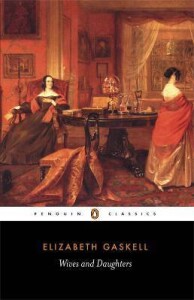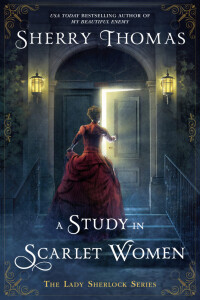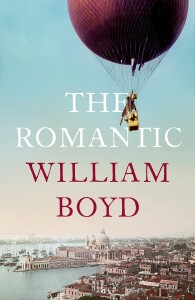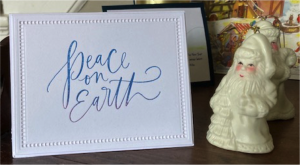
In this leisurely Victorian novel, we get a wonderful portrait of domestic life in a rural English town. Gaskell follows Jane Austen’s dictum that “Three or four families in a country village is the very thing to work on.” There is much humor here as well, but unlike Austen’s wit and satire, Gaskell’s compassion gives us well-rounded characters we recognise immediately from our own lives.
We first meet Molly Gibson, motherless daughter of a respected doctor, as a girl of twelve. Quiet, sensitive and loving, Molly’s sheltered upbringing has made her an interesting combination of innocence and perspicacity. As her father’s companion, she has had more leeway in terms of reading material and worldly conversation than most young women of the time.
The story follows her into young adulthood, as she gains a stepmother and stepsister, as well as a deeper connection with several local families. Here is the true charm of the story for me: the careful way the various characters are brushed in, and the depiction of the subtle—and not so subtle—class distinctions in the town.
As a professional, Molly’s father is a step above the genteel families of Hollingford, themselves superior to the servants and working class. A step above him is Squire Hamley, who family has been established on their property since before the Norman Conquest, though the family is in decline at this point. Above them—though Squire Hamley frequently contests this point—are Lord and Lady Cumnor at the Hall who have been there a mere hundred years or so.
As you would expect, there are romantic entanglements for both Molly and her stepsister Cynthia. The two are close from the start despite their different personalities, Cynthia being shallow and selfish compared to Molly. Romance finds other characters, too, especially Squire Hamley’s two sons.
I’m impressed by how much Gaskell works into this novel, while keeping up the narrative pace: not just daily life, class distinctions and the limitations of women’s roles, but also the political tensions between Whigs and Tories, the complications arising from family secrets, and the burgeoning (if often amateur) scientific developments. Charles Darwin was Gaskell’s cousin and perhaps the model for young Roger Hamley. There is also a fascinating thread about the limitations and unintended consequences of innocence and purity.
The last novel by Gaskell, was originally published in serial form in Cornhill Magazine between 1864 and 1866. Gaskell died in 1865 without completing the final bit, so the last section was written by Frederick Greenwood explaining how Gaskell intended the novel to end. Gaskell was also the author of North and South, Cranford, and a biography—the first—of Charlotte Brontë.
Wives and Daughters is a long and leisurely read. The first two-thirds seemed slow to this 21st century reader, but I relaxed into the pace, and was rewarded by a more lively last third. Another benefit of the length is the rich tapestry of rural life in England around 1830.
Do you have a favorite Victorian novel, or one set in that time period?


